It looks like you're using an Ad Blocker.
Please white-list or disable AboveTopSecret.com in your ad-blocking tool.
Thank you.
Some features of ATS will be disabled while you continue to use an ad-blocker.
share:
Stealth through the years
Many people believe that stealth is a recent development, but stealth has been around almost as long as detection systems to detect aircraft have been around. As far back as WWII detection countermeasures were being used by both sides. By the late portion of the war, aircraft on both sides had been developed that had reduced radar cross sections.
Acoustic Mirrors and Countermeasures
Prior to WWII, acoustic radar systems were in use. These systems are designed to detect the sound of incoming aircraft by using parabolic "mirrors". Multiple large reflectors were placed along areas that aircraft may approach from to listen for them approaching. The systems weren't very effective, and as aircraft got faster, their effectiveness decreased, as the time from detection to the aircraft being overhead decreased.
To counter this, the German aircraft would fly towards England with their engines unsynchronized. Normally a multiengine propellor aircraft flies with both engines synchronized to run as smoothly as possible. This also causes the sound to be multiplied, which can be detected farther away. By flying with the engines unsynchronized it changed the sound signature of the aircraft, so the detection range was decreased by the mirrors.
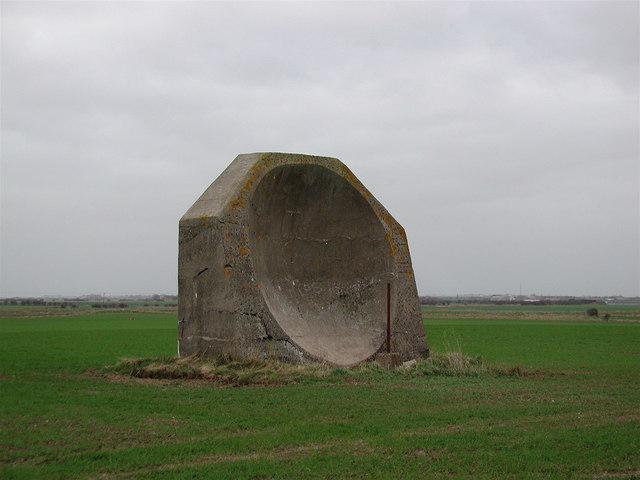
Radar and the Begining of Stealth
In 1935, tests showed that a radio signal could hit an aircraft, and be detected by a receiver. The first radar system detected an aircraft at 17 miles in June of 1935. By the outbreak of WWII radar systems were becoming more common, and by 1939 the British had a system that could be mounted on an aircraft, allowing for night interceptions, without having to make visual contact first.
One of the interesting early stealth attempts wasn't even designed as a stealth design. The de Havilland Mosquito was originally designed as an unarmed fast bomber, built almost entirely out of wood. It eventually became a multipurpose aircraft for everything from photo reconnaissance, to target towing. It had a low radar signature, because of the wooden structure, along with rubber dampening structures in the aircraft, all of which didn't leave much to reflect radar signals.
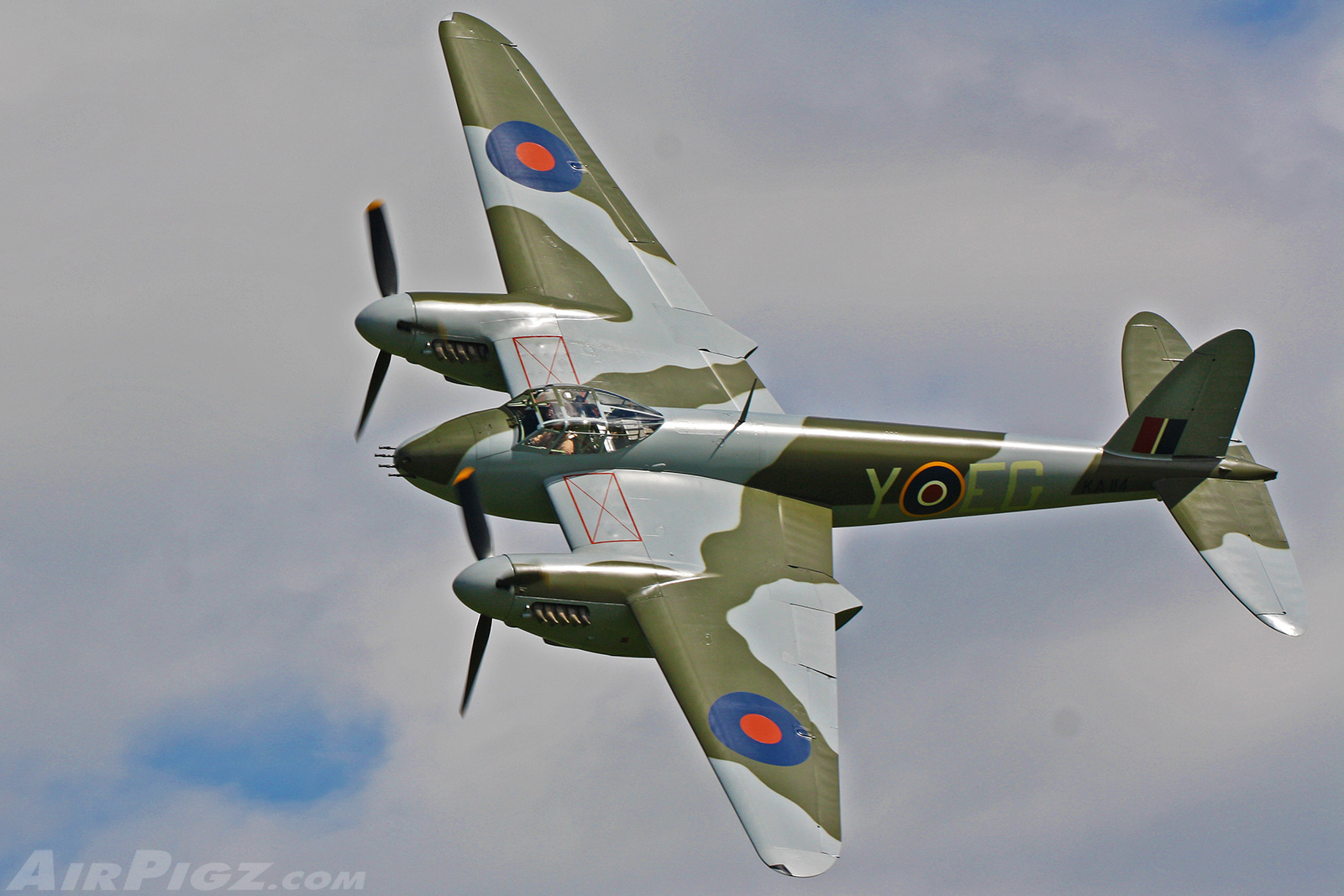
Later in the war, both the US and Germans had flown flying wing aircraft, which have an inherently low radar cross section, due to their shape. The Germans eventually developed and flew the Horton Ho.229 flying wing. Lockheed Martin built a radar test model of the aircraft, and tested the RCS on their test range. The tests were shocking, and showed that if they had gotten it into production in any kind of numbers, they could have caused a lot of damage to the RAF. The detection time was reduced significantly, giving much less time to react and launch interceptors.
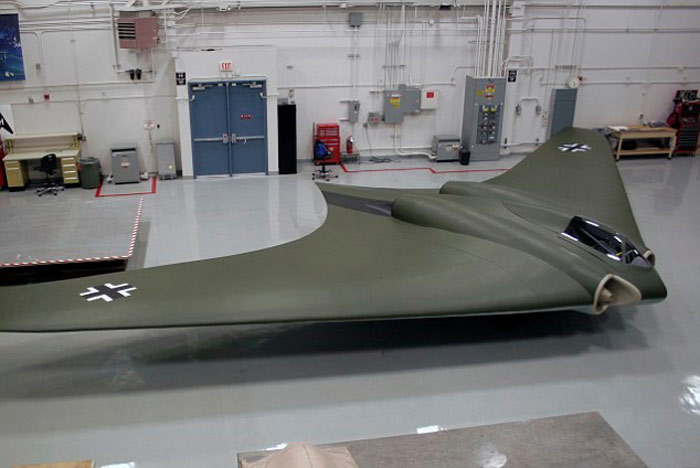
Flying wings have been found to be stealthy due to the fact that there isn't a large fuselage for the radar to hit and return from. The drawback to a flying wing design, however, is that it is also inherently unstable and hard to control. Especially until recent years when computers were finally able to compensate for the unstable airframe.
The Post War Years
During WWII, the Army Air Force started looking for a new bomber. Requirements were for a 10,000 pound payload, 10,000 miles, with a 275 mph cruise speed, at 45,000 feet. This would allow bombing of Europe if Britain fell. In 1946, the first XB-35 flew. Thanks to politics, and other factors the program was eventually cancelled and the aircraft scrapped in 1953.
The Cold War
After the war, the US began overflights of the USSR, using the Lockheed U-2. The aircraft was non-stealthy, and many attempts were made to make it stealthy. In the 1950s, Lockheed attempted to reduce the RCS by putting printed circuits on the skin, to suppress S-Band radar. The next attempt was to put wires near the leading and trailing edge of the wings and tail, that were 180 degrees out of phase of 70 MHz radar, so they would, in theory, cancel the return. The result of both was to reduce the cruising altitude and speed, with a negligible affect on RCS, so the ideas were dropped.

When Lockheed flew the SR-71, they attempted several radar reduction systems on the airframe. Lead in the leading edges, a long flat shape, and other features. As a result it had a reduced radar return compared to other aircraft. The aircraft never overflew the USSR, but it was the first aircraft designed from the begining with stealth characteristics in mind.
The Petr Ufimtsev Years
Petr Ufimtsev was a Soviet engineer in the 1960s. He began working on a formula that would describe the reflection of lasers from two and three dimensional objects. He was told by his superiors that his work was useless and was given permission to publish it internationally. After publishing, an engineer at Lockheed realized that he had created a theory that would allow them to predict how radar would react to hitting an aircraft, allowing them to create shapes and test how the EM energy would react to hitting them.
Lockheed used this formula to map out the radar cross section of the F-117 design. Later Northrop was able to use it to predict the B-2 RCS when they were developing it. With the F-117, the model used, known as Echo-1, was only able to calculate in 2 dimensions, which led to a faceted shape, designed to significantly reduce the RCS. The SR-71 had an RCS of 0.01 m2, or roughly that of a bird. By the time of the F-117, they had that down to 0.003 m2, and it continued to drop on later platforms. Both the F-22 and B-2 have a public RCS of 0.0001 m2, using a more conventional shape, and advanced materials.
The Future
Stealth continues to advance, even as countermeasures do. The Air Force B-21 was designed to have a reduced cross section against UHF and VHF radar, compared to the B-2, both of which are becoming much more prevalent in many parts of the world. Experiments have been done with active RAM, which will work to counter the radar as it hits the aircraft, as well as with optical stealth, which will reduce the visual signature of the aircraft, making it harder to see and visually intercept. No public RCS data has yet been released on the B-21, but with modern materials and shapes, it should be significantly lower than even the B-2 and F-22.
This thread isn't meant to cover every single aspect of stealth, but to give a broad generalization of stealth through the years. I know that some things have been left out, but at the same time, it gives a good picture as to just how long ago stealth work actually began, even inadvertantly.
Many people believe that stealth is a recent development, but stealth has been around almost as long as detection systems to detect aircraft have been around. As far back as WWII detection countermeasures were being used by both sides. By the late portion of the war, aircraft on both sides had been developed that had reduced radar cross sections.
Acoustic Mirrors and Countermeasures
Prior to WWII, acoustic radar systems were in use. These systems are designed to detect the sound of incoming aircraft by using parabolic "mirrors". Multiple large reflectors were placed along areas that aircraft may approach from to listen for them approaching. The systems weren't very effective, and as aircraft got faster, their effectiveness decreased, as the time from detection to the aircraft being overhead decreased.
To counter this, the German aircraft would fly towards England with their engines unsynchronized. Normally a multiengine propellor aircraft flies with both engines synchronized to run as smoothly as possible. This also causes the sound to be multiplied, which can be detected farther away. By flying with the engines unsynchronized it changed the sound signature of the aircraft, so the detection range was decreased by the mirrors.

Radar and the Begining of Stealth
In 1935, tests showed that a radio signal could hit an aircraft, and be detected by a receiver. The first radar system detected an aircraft at 17 miles in June of 1935. By the outbreak of WWII radar systems were becoming more common, and by 1939 the British had a system that could be mounted on an aircraft, allowing for night interceptions, without having to make visual contact first.
One of the interesting early stealth attempts wasn't even designed as a stealth design. The de Havilland Mosquito was originally designed as an unarmed fast bomber, built almost entirely out of wood. It eventually became a multipurpose aircraft for everything from photo reconnaissance, to target towing. It had a low radar signature, because of the wooden structure, along with rubber dampening structures in the aircraft, all of which didn't leave much to reflect radar signals.

Later in the war, both the US and Germans had flown flying wing aircraft, which have an inherently low radar cross section, due to their shape. The Germans eventually developed and flew the Horton Ho.229 flying wing. Lockheed Martin built a radar test model of the aircraft, and tested the RCS on their test range. The tests were shocking, and showed that if they had gotten it into production in any kind of numbers, they could have caused a lot of damage to the RAF. The detection time was reduced significantly, giving much less time to react and launch interceptors.

Flying wings have been found to be stealthy due to the fact that there isn't a large fuselage for the radar to hit and return from. The drawback to a flying wing design, however, is that it is also inherently unstable and hard to control. Especially until recent years when computers were finally able to compensate for the unstable airframe.
The Post War Years
During WWII, the Army Air Force started looking for a new bomber. Requirements were for a 10,000 pound payload, 10,000 miles, with a 275 mph cruise speed, at 45,000 feet. This would allow bombing of Europe if Britain fell. In 1946, the first XB-35 flew. Thanks to politics, and other factors the program was eventually cancelled and the aircraft scrapped in 1953.
The Cold War
After the war, the US began overflights of the USSR, using the Lockheed U-2. The aircraft was non-stealthy, and many attempts were made to make it stealthy. In the 1950s, Lockheed attempted to reduce the RCS by putting printed circuits on the skin, to suppress S-Band radar. The next attempt was to put wires near the leading and trailing edge of the wings and tail, that were 180 degrees out of phase of 70 MHz radar, so they would, in theory, cancel the return. The result of both was to reduce the cruising altitude and speed, with a negligible affect on RCS, so the ideas were dropped.

When Lockheed flew the SR-71, they attempted several radar reduction systems on the airframe. Lead in the leading edges, a long flat shape, and other features. As a result it had a reduced radar return compared to other aircraft. The aircraft never overflew the USSR, but it was the first aircraft designed from the begining with stealth characteristics in mind.
The Petr Ufimtsev Years
Petr Ufimtsev was a Soviet engineer in the 1960s. He began working on a formula that would describe the reflection of lasers from two and three dimensional objects. He was told by his superiors that his work was useless and was given permission to publish it internationally. After publishing, an engineer at Lockheed realized that he had created a theory that would allow them to predict how radar would react to hitting an aircraft, allowing them to create shapes and test how the EM energy would react to hitting them.
Lockheed used this formula to map out the radar cross section of the F-117 design. Later Northrop was able to use it to predict the B-2 RCS when they were developing it. With the F-117, the model used, known as Echo-1, was only able to calculate in 2 dimensions, which led to a faceted shape, designed to significantly reduce the RCS. The SR-71 had an RCS of 0.01 m2, or roughly that of a bird. By the time of the F-117, they had that down to 0.003 m2, and it continued to drop on later platforms. Both the F-22 and B-2 have a public RCS of 0.0001 m2, using a more conventional shape, and advanced materials.
The Future
Stealth continues to advance, even as countermeasures do. The Air Force B-21 was designed to have a reduced cross section against UHF and VHF radar, compared to the B-2, both of which are becoming much more prevalent in many parts of the world. Experiments have been done with active RAM, which will work to counter the radar as it hits the aircraft, as well as with optical stealth, which will reduce the visual signature of the aircraft, making it harder to see and visually intercept. No public RCS data has yet been released on the B-21, but with modern materials and shapes, it should be significantly lower than even the B-2 and F-22.
This thread isn't meant to cover every single aspect of stealth, but to give a broad generalization of stealth through the years. I know that some things have been left out, but at the same time, it gives a good picture as to just how long ago stealth work actually began, even inadvertantly.
Stealth goes back much further than aircraft.
Prehistoric hunters draped themselves in wolf skins and crawled on all fours to sneak up on herds of bison.
The bison knew a wolf would not attack a circled herd, but they had no experience with sharpened flint spears.
Same ancient game. New toys.
Prehistoric hunters draped themselves in wolf skins and crawled on all fours to sneak up on herds of bison.
The bison knew a wolf would not attack a circled herd, but they had no experience with sharpened flint spears.
Same ancient game. New toys.
a reply to: skunkape23
It does, but for our purposes, we're only looking at stealth since the start of aviation. It would have been far too long a thread to try to include the early days of man hunting.
It does, but for our purposes, we're only looking at stealth since the start of aviation. It would have been far too long a thread to try to include the early days of man hunting.
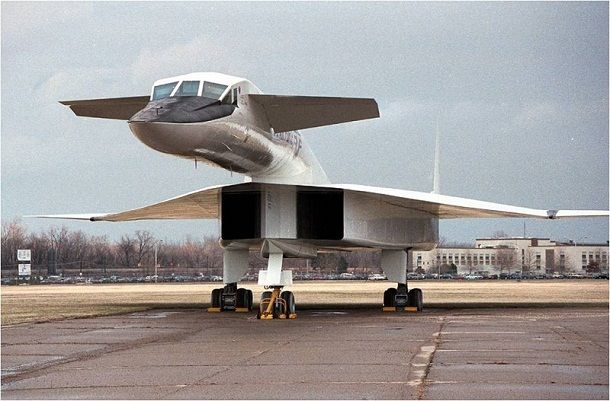
XB 70

Horton HO 229
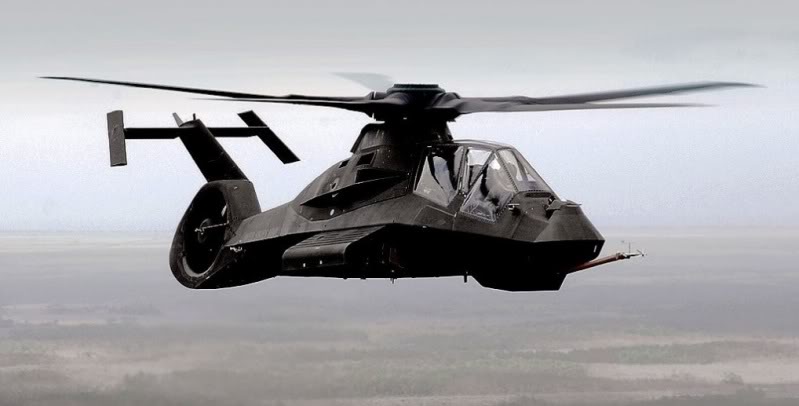
OH 58D

Samurai class Stealth Ninja
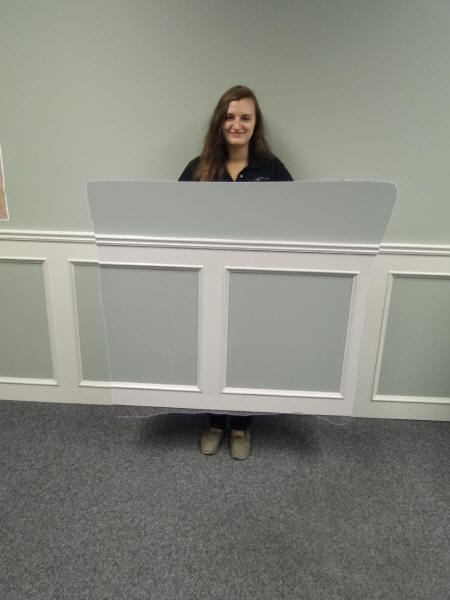
Hyperstealth Invisibility Camo
edit on 24-3-2016 by 5StarOracle because: word
originally posted by: Zaphod58
a reply to: skunkape23
It does, but for our purposes, we're only looking at stealth since the start of aviation. It would have been far too long a thread to try to include the early days of man hunting.
I have pondered the value, in war, of anti-stealth.
If we toed it up with NK, how effective would it be to send overwhelming numbers of unmanned craft?
Let them shoot their load before we send the big boys in and they're all out of bullets.
a reply to: skunkape23
NK will be collapsed from within...
Unless they do something entirely stupid and are made an example of by total decimation...
But the Rothschild family desires central banking in Cuba and Iran first although the seeds are being planted for the movement within NK...
And this too is a form of stealth...
NK will be collapsed from within...
Unless they do something entirely stupid and are made an example of by total decimation...
But the Rothschild family desires central banking in Cuba and Iran first although the seeds are being planted for the movement within NK...
And this too is a form of stealth...
edit on 24-3-2016 by 5StarOracle because: word
a reply to: 5StarOracle
They'll just hold up their nuclear development, Obamas more of a drone man but bush put a big dent in their nuclear program in one fell swoop.
The weapon and aircraft are still classified soo doubt it will ever come out.
They'll just hold up their nuclear development, Obamas more of a drone man but bush put a big dent in their nuclear program in one fell swoop.
The weapon and aircraft are still classified soo doubt it will ever come out.
a reply to: 5StarOracle
The XB-70 wasn't stealthy. The Ho.229 was in the OP. That's not an OH-58D, and wasn't a very good stealth platform. What does a "Samurai class Stealth Ninja" have to do with anything?
The XB-70 wasn't stealthy. The Ho.229 was in the OP. That's not an OH-58D, and wasn't a very good stealth platform. What does a "Samurai class Stealth Ninja" have to do with anything?
edit on 3/24/2016 by Zaphod58 because: (no reason given)
a reply to: Zaphod58
Nice read, always enjoy these techie things. My favourite plane from those earlyish days was the Gotha P 60a. It looked super futuristic to me as a kid. I am not sure how stealthy it would have been (as far as I know it was never actually built) but It couldn't have been that stealthy really, I am sure that the shape of it has been incorporated into other more modern designs though.
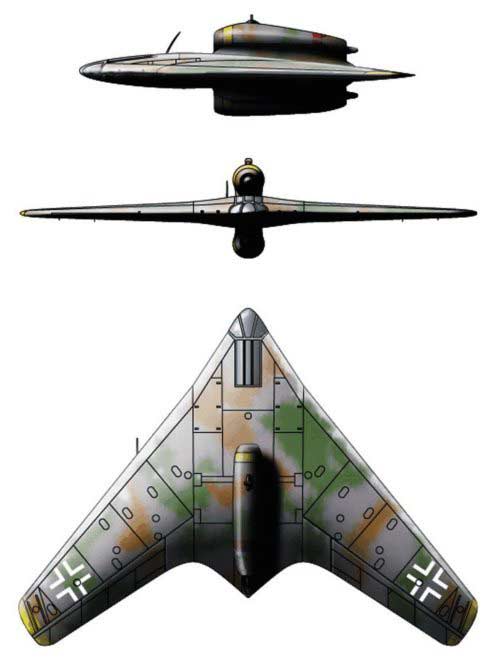
Gotha P 60 bit of info
Another thing I always wondered about was there was a ufo case in France during the war, in which a man witnessed a strange vehicle in which the pilot (a woman) actually lay on her stomach to pilot the plane. Makes me wonder.
Nice read, always enjoy these techie things. My favourite plane from those earlyish days was the Gotha P 60a. It looked super futuristic to me as a kid. I am not sure how stealthy it would have been (as far as I know it was never actually built) but It couldn't have been that stealthy really, I am sure that the shape of it has been incorporated into other more modern designs though.

Gotha P 60 bit of info
Another thing I always wondered about was there was a ufo case in France during the war, in which a man witnessed a strange vehicle in which the pilot (a woman) actually lay on her stomach to pilot the plane. Makes me wonder.
edit on 24-3-2016 by Jonjonj because: addition
hey zaph, I like that you mentioned Active RAM.
any further thoughts regarding development of that aspect of RAM. I think the topics exciting.
I'd imagine they'd want to make the Active RAM somewhat tunable to adapt to different radars using different bandwidths that it would come up against while penetrating towards a target or objective.
any further thoughts regarding development of that aspect of RAM. I think the topics exciting.
I'd imagine they'd want to make the Active RAM somewhat tunable to adapt to different radars using different bandwidths that it would come up against while penetrating towards a target or objective.
a reply to: Zaphod58
My bad I had the RAH 66 Comanche in a different article and labeled it wrong...
The ninja was the beginnings of stealth...
the success of spy missions accomplished by ninja is what helped develop the mindset and the want and need for stealth tech in the future...
The XB 70 design was an attempt at stealth in mind hoping to deflect early radar although unsuccessful...
However the speeds of mach 3 were highly successful at evading early radar because they would be out of range too fast for a scramble...
My bad I had the RAH 66 Comanche in a different article and labeled it wrong...
The ninja was the beginnings of stealth...
the success of spy missions accomplished by ninja is what helped develop the mindset and the want and need for stealth tech in the future...
The XB 70 design was an attempt at stealth in mind hoping to deflect early radar although unsuccessful...
However the speeds of mach 3 were highly successful at evading early radar because they would be out of range too fast for a scramble...
edit on 24-3-2016 by 5StarOracle because: word
a reply to: 5StarOracle
The XB-70 was of a similar school as the SR-71 in that it would be too fast and too high to be shot down. The introduction of the Surface to Air Missile was the first nail in its coffin. The Air Force changed their philosophy to a low level approach, and the XB-70 wasn't much better than a B-52 there.
It had very few stealth features, even compared to the SR-71. It's stealth was its speed. It would pass over radar stations too fast for them to react and position fighters against it.
The XB-70 was of a similar school as the SR-71 in that it would be too fast and too high to be shot down. The introduction of the Surface to Air Missile was the first nail in its coffin. The Air Force changed their philosophy to a low level approach, and the XB-70 wasn't much better than a B-52 there.
It had very few stealth features, even compared to the SR-71. It's stealth was its speed. It would pass over radar stations too fast for them to react and position fighters against it.
a reply to: Bedlam
I remember the old acoustic tiles we would put on the subs. They were like a square meter in size. Usually you'd see pics of subs missing a few here or there. The russian ones missing a lot here and everywhere.
Acoustic metamaterials. Interesting subject. Phononic crystals and Split Ring Sonic Resonators. I'd imagine to make a tile that could play or do negative refraction with a diverse swath of active sonar frequencies you'd want to make like a stack of metamaterial spheres each tuned for a different wavelength envelope.
I could see the similarities in wave propagation between phonons and em. Would make sense to use ideas the Navy developed for sound cloaking and cross over to EM for the air force. Lord knows the air force has likely borrowed a bunch of other relevant stuff from various navy programs. Plus aren't acoustic waves generally pretty large wavelengths with respect to radar waves, but the lattice waves of the phonon may be treated similar in action to large wavelengths used in old school radars and thus potentially useful?
I dunno, metamaterials are a diverse and fascinating topic.
What I wanna know is that I understand with EM metamaterials there is a specific frequency envelope the double negative index refraction takes place in. Within that envelope there are often reverse optical shock cones due to things traveling faster than the phase velocity of the medium. Would it be reasonable that that it would be the case that outside the designed envelope of the metamaterial the optical shock cone would be normal and potentially traveling faster than the phase velocity?
I remember the old acoustic tiles we would put on the subs. They were like a square meter in size. Usually you'd see pics of subs missing a few here or there. The russian ones missing a lot here and everywhere.
Acoustic metamaterials. Interesting subject. Phononic crystals and Split Ring Sonic Resonators. I'd imagine to make a tile that could play or do negative refraction with a diverse swath of active sonar frequencies you'd want to make like a stack of metamaterial spheres each tuned for a different wavelength envelope.
I could see the similarities in wave propagation between phonons and em. Would make sense to use ideas the Navy developed for sound cloaking and cross over to EM for the air force. Lord knows the air force has likely borrowed a bunch of other relevant stuff from various navy programs. Plus aren't acoustic waves generally pretty large wavelengths with respect to radar waves, but the lattice waves of the phonon may be treated similar in action to large wavelengths used in old school radars and thus potentially useful?
I dunno, metamaterials are a diverse and fascinating topic.
What I wanna know is that I understand with EM metamaterials there is a specific frequency envelope the double negative index refraction takes place in. Within that envelope there are often reverse optical shock cones due to things traveling faster than the phase velocity of the medium. Would it be reasonable that that it would be the case that outside the designed envelope of the metamaterial the optical shock cone would be normal and potentially traveling faster than the phase velocity?
originally posted by: B2StealthBomber
a reply to: Zaphod58
Nice thread too Zaph! Heard AvLeak is looking for a new member of the team, you should go for it!
Personally I think Zaph should go for it.
If not for the big gig they should at least be asking him to be a guest columnist or writer. Zaph's articles, due to his robust experience and knowledge and connections in the aviation field, could easily range from fun, and quirky aviation stories and history to the most piercing articles diving deep into the classified aviation and aerospace realm.
He could basically never run out of story and article ideas. I think Zaph would quickly become respected working over there and take the lions share of writing work if he wanted.
Go for it zaph. If not the big gig at least guest columnist or writer. Send them a spec. article see what they say.
a reply to: 5StarOracle
I think the main thing they learned from the XB-70 was that she developed a lot of lift. Something you would want to have if you intend to fly at very high altitudes. I think the anhedral wingtips had a lot to do with it. Then again I'm a sucker for anhedral wingtips I just think they look cool and should come standard on every plane. Wonder if they have other uses besides lift.
Another thing notable about the XB-70 is her relatively long fuselage length in regards to her goose neck and nose. Gotta lend it's self to something useful other than balancing the weight of the plane while at high speeds. I dunno if there was though I haven't heard anything about it.
I think the main thing they learned from the XB-70 was that she developed a lot of lift. Something you would want to have if you intend to fly at very high altitudes. I think the anhedral wingtips had a lot to do with it. Then again I'm a sucker for anhedral wingtips I just think they look cool and should come standard on every plane. Wonder if they have other uses besides lift.
Another thing notable about the XB-70 is her relatively long fuselage length in regards to her goose neck and nose. Gotta lend it's self to something useful other than balancing the weight of the plane while at high speeds. I dunno if there was though I haven't heard anything about it.
new topics
-
BIDEN Admin Begins Planning For January 2025 Transition to a New President - Today is 4.26.2024.
2024 Elections: 2 hours ago -
Big Storms
Fragile Earth: 3 hours ago -
Where should Trump hold his next rally
2024 Elections: 6 hours ago -
Shocking Number of Voters are Open to Committing Election Fraud
US Political Madness: 7 hours ago -
Gov Kristi Noem Shot and Killed "Less Than Worthless Dog" and a 'Smelly Goat
2024 Elections: 8 hours ago -
Falkville Robot-Man
Aliens and UFOs: 8 hours ago -
James O’Keefe: I have evidence that exposes the CIA, and it’s on camera.
Whistle Blowers and Leaked Documents: 9 hours ago -
Australian PM says the quiet part out loud - "free speech is a threat to democratic dicourse"...?!
New World Order: 9 hours ago -
Ireland VS Globalists
Social Issues and Civil Unrest: 10 hours ago -
Biden "Happy To Debate Trump"
2024 Elections: 10 hours ago
top topics
-
James O’Keefe: I have evidence that exposes the CIA, and it’s on camera.
Whistle Blowers and Leaked Documents: 9 hours ago, 17 flags -
Australian PM says the quiet part out loud - "free speech is a threat to democratic dicourse"...?!
New World Order: 9 hours ago, 15 flags -
Blast from the past: ATS Review Podcast, 2006: With All Three Amigos
Member PODcasts: 13 hours ago, 13 flags -
Biden "Happy To Debate Trump"
2024 Elections: 10 hours ago, 12 flags -
Ireland VS Globalists
Social Issues and Civil Unrest: 10 hours ago, 9 flags -
Mike Pinder The Moody Blues R.I.P.
Music: 13 hours ago, 8 flags -
What is the white pill?
Philosophy and Metaphysics: 12 hours ago, 6 flags -
Shocking Number of Voters are Open to Committing Election Fraud
US Political Madness: 7 hours ago, 6 flags -
Where should Trump hold his next rally
2024 Elections: 6 hours ago, 5 flags -
Gov Kristi Noem Shot and Killed "Less Than Worthless Dog" and a 'Smelly Goat
2024 Elections: 8 hours ago, 5 flags
active topics
-
BIDEN Admin Begins Planning For January 2025 Transition to a New President - Today is 4.26.2024.
2024 Elections • 13 • : WeMustCare -
Big Storms
Fragile Earth • 14 • : charlest2 -
Gov Kristi Noem Shot and Killed "Less Than Worthless Dog" and a 'Smelly Goat
2024 Elections • 56 • : GENERAL EYES -
What is the white pill?
Philosophy and Metaphysics • 21 • : Albone -
Hate makes for strange bedfellows
US Political Madness • 53 • : 19Bones79 -
RAAF airbase in Roswell, New Mexico is on fire
Aliens and UFOs • 11 • : Ophiuchus1 -
SETI chief says US has no evidence for alien technology. 'And we never have'
Aliens and UFOs • 79 • : SchrodingersRat -
Gold and silver prices....woo hoo
History • 88 • : SchrodingersRat -
University of Texas Instantly Shuts Down Anti Israel Protests
Education and Media • 314 • : Schmoe3755 -
President BIDEN's FBI Raided Donald Trump's Florida Home for OBAMA-NORTH KOREA Documents.
Political Conspiracies • 39 • : AwakeNotWoke
